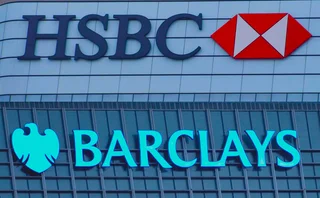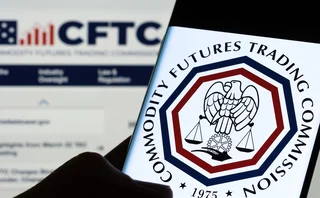
The great rating debate
A conference in Paris exposed some criticism of the way the rating agencies function. Issuers and investors feel the industry suffers from a lack of competition which has harmed service levels. Sarfraz Thind reports
Credit rating agencies are in the sober business of assigning judgments of creditworthiness to institutions that issue debt. Theirs is hardly a world one expects to attract ugly accusations that they operate as an 'oligopoly' or that their marketing methods are 'pernicious'.
Yet that's exactly what happened at a conference to discuss competitive issues surrounding the rating agencies held in Paris in February.
Hosted by the Bond Market Association (BMA) at the Hotel Royal Monceau, the conference exposed two major bones of contention among the issuers who are rated by the agencies, and the investors who rely on these ratings to make their investment decisions.
The first concern, reported largely by issuers, was that the rating agencies are not competitive, which according to some has led to inflated fees but declining service. The second, which provoked considerable debate, and at least one indignant 'walkout' from the conference hall, was the question of unsolicited ratings (see box).
The criticism overshadowed some good news for the rating agencies: a poll conducted by the BMA and published at the event revealed an overwhelming percentage of the 41 issuers and 51 investors surveyed (82%) felt they had a good relationship with the rating agencies.
Yet delegates clearly felt there was room for improvement in the way that rating agencies function.
"We have three ratings, and have to pay three agencies," said Herman Agneessens, chief financial officer and chief risk officer at KBC Group in Brussels. "Does it bring added value to have three? I'm not sure. Moreover, we have seen the price go up for many rating agencies, at around three times that of inflation."
According to Michael Wolgast, chief economist at the Association of German Insurance Companies (GDV) in Berlin, more regulation is required. "The ratings world is an oligopoly. The definition of an oligopoly is that it charges too high prices and the service is too low: a strong argument for more regulation," he said.
Criticism even came from rating agencies themselves. For those outside the big three - Standard & Poor's, Moody's and Fitch Ratings - there are too many barriers to entry. Rating and Investment Information Inc (R&I), for example, one of the biggest rating agencies in Japan, has found the path into entering the US market blocked by US regulators, reported Yasuhiro Harada, president and chief executive.
In response, a spokesperson for Moody's says: "We favour more, rather than less, competition. We believe that a market in which rating agencies are encouraged to compete on the quality of their ratings can only enhance the integrity and transparency of the market. Investors are well served by having a broad array of opinions to choose from."
The spokesperson points to the results of the BMA poll, which he says reveal a high level of appreciation of the job these firms do. "Over 80% of issuers characterised their relationship with the rating agencies as 'good', and not a single issuer said they had a 'bad' relationship," says the spokesperson. "In addition, 37% of issuers saw improved service over the past year."
Personality problem
Still, issuers at the conference also felt disappointed by declining personal relationships. Magda Vakil, head of finance at Energias de Portugal, said analysts at rating agencies have less time to take calls than previously. "I wonder if they need more resources," she said.
In response, while they acknowledge that fees may have increased in recent times, the rating agencies say that this is a result of the increased resources being put into improving the ratings service.
"Our fee structure is fully transparent and communicated to issuers," says Martin Winn, spokesperson for Standard & Poor's in London. "Furthermore we are continually enhancing the ratings process through training and communication with the market, which adds significant costs. And we aim to make all our analysts available to the market without charge."
The issue of transparency in the ratings process, and the need for greater consistency across the industry, was another major theme of the conference. In particular, both issuers and investors highlighted that agencies often take longer to upgrade a company improving its financial position, in contrast to the speed with which they make downgrades.
Barbara Ridpath, head of ratings services Europe at Standard & Poor's, acknowledged the issue of "sticky upgrades", but this, she said, was an inherent by-product of the nature of the business. "The issue is a natural tendency of conservative credit analysts. You want proof before you give an upgrade, while for a downgrade you need to let the market know of troubles immediately."
Despite this barrage of criticism, delegates at the conference were largely against further regulation of the industry.
"There is enormous responsibility on credit rating agencies to behave in the right way and be seen to be behaving," said Rupert Atkinson, head of the European credit advisory group at Morgan Stanley. "But I don't think that greater regulations can achieve this. If anything it would just raise barriers."
And although they were willing to list their complaints against the work that rating agencies do, issuers and investors were seemingly unaware that these firms do subscribe to a code of conduct, which was released by securities watchdog the International Organization of Security Commissions (Iosco) in 2004. Some 70% of respondents in the BMA poll were unaware this code even existed.
S&P's Winn says that regulation in the industry is something that has been looked at for some time. However, he believes that agencies such as S&P have already been working through internal codes of conduct, which closely mirror those drawn up by regulators. "The Iosco code of conduct just reinforces the market-based system of accountability for rating agencies," says Winn. "The overwhelming demand from the vast majority of organisations that use ratings is not to introduce new regulations but for the market to remain the judge."
Unsolicited ratings under fire
The practice of unsolicited ratings - ratings published without the issuer's participation - was widely condemned at the Paris conference. Issuers and investors represented on panel discussions pointed to the risk that these ratings are published without recourse to company information in its entirety. To compound the problem, a majority of investors polled by the BMA at the event, 59%, said they rely on unsolicited ratings to make judgments on some companies.
Issuers expressed concern that most unsolicited ratings tend to be lower than those which are paid for, and that often rating agencies use this tactic to put pressure on the companies to accept their ratings business. "By definition unsolicited ratings don't have an insight, so the ratings have to be on the conservative end of the scale," said Herman Agneessens at KBC Group in Brussels. "But this is a pernicious and unattractive marketing tool which should be banned."
Many investors are not aware that a given rating is solicited or not, and this can lead to misrepresentation of a company's financial strength, said delegates.
For the officials representing the rating agencies, the discussion was equally as emotive, prompting much shaking of heads in the conference hall.
Fitch Ratings said one of the reasons it conducts unsolicited ratings is in order to compete with its bigger rivals Moody's and S&P. According to the BMA poll, Fitch makes the most widespread use of this practice, with 13% of issuers saying that they had been on the receiving end of unsolicited ratings from the agency compared with 5% each from Moody's and DBRS. In Europe Standard & Poor's only conducts unsolicited ratings on insurance firms.
Richard Hunter, regional credit officer for EMEA at Fitch Ratings in London, said his firm has recently added a disclosure to clarify whether an issuer participated in the rating process or not, as a result of the Iosco code of conduct. However he cautioned against the assumption that solicited ratings are always based on full and continued participation from issuers. "This may assume that information from an issuer is always uniform and continuous on solicited ratings. The information flow varies over time," he said.
CreditOnly users who have a paid subscription or are part of a corporate subscription are able to print or copy content.
To access these options, along with all other subscription benefits, please contact info@risk.net or view our subscription options here: http://subscriptions.risk.net/subscribe
You are currently unable to print this content. Please contact info@risk.net to find out more.
You are currently unable to copy this content. Please contact info@risk.net to find out more.
Copyright Infopro Digital Limited. All rights reserved.
As outlined in our terms and conditions, https://www.infopro-digital.com/terms-and-conditions/subscriptions/ (point 2.4), printing is limited to a single copy.
If you would like to purchase additional rights please email info@risk.net
Copyright Infopro Digital Limited. All rights reserved.
You may share this content using our article tools. As outlined in our terms and conditions, https://www.infopro-digital.com/terms-and-conditions/subscriptions/ (clause 2.4), an Authorised User may only make one copy of the materials for their own personal use. You must also comply with the restrictions in clause 2.5.
If you would like to purchase additional rights please email info@risk.net
More on Regulation
Barr defends easing of Basel III endgame proposal
Fed’s top regulator says he will stay and finish the package, is comfortable with capital impact
Bank of England to review UK clearing rules
Broader collateral set and greater margin transparency could be adopted from Emir 3.0, but not active accounts requirement
The wisdom of Oz? Why Australia is phasing out AT1s
Analysts think Australian banks will transition smoothly, but other countries unlikely to follow
EU trade repository matching disrupted by Emir overhaul
Some say problem affecting derivatives reporting has been resolved, but others find it persists
Barclays and HSBC opt for FRTB internal models
However, UK pair unlikely to chase approval in time for Basel III go-live in January 2026
Foreign banks want level playing field in US Basel III redraft
IHCs say capital charges for op risk and inter-affiliate trades out of line with US-based peers
CFTC’s Mersinger wants new rules for vertical silos
Republican commissioner shares Democrats’ concerns about combined FCMs and clearing houses
Adapting FRTB strategies across Apac markets
As Apac banks face FRTB deadlines, MSCI explores the insights from early adopters that can help them align with requirements







